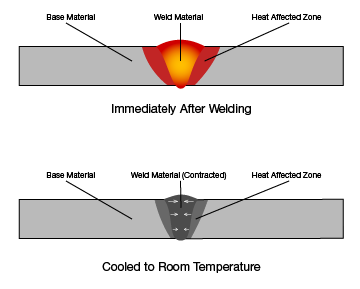Stress Relieving For Welding
Stress-relieving is a post-weld treatment that reduces residual stresses present in a workpiece after welding. These residual stresses could cause distortion or premature failure of the joint if left untreated. The stress-relieving process involves heating the workpiece or localized area around a weld to a specific temperature, holding it at that temperature for enough time to reduce the stresses present in the material, and then cooling the material at a slow enough rate so as to not allow the stresses to redevelop. Another way to think of this process is that you are essentially annealing the welded area.
Stress-relieving can also be done using a pre-heat method prior to welding. this ensures that both surfaces to be welded are at the same temperature. Starting the parts at a higher temperature reduces the difference in temperature between the welded and non-welded areas, creating less internal tension in the weld.
Stress-relieving is important because internal stresses in the weld can result in a weaker joint that may lead to premature failure.

Induction can be useful for this process because it allows for precise heat control. This means that the welded area of a part can be stress relieved without affecting the rest of the part. In some cases, induction technology can be integrated right into the same machines or part fixturing used for the welding which can save significant time and energy when dealing with large parts.